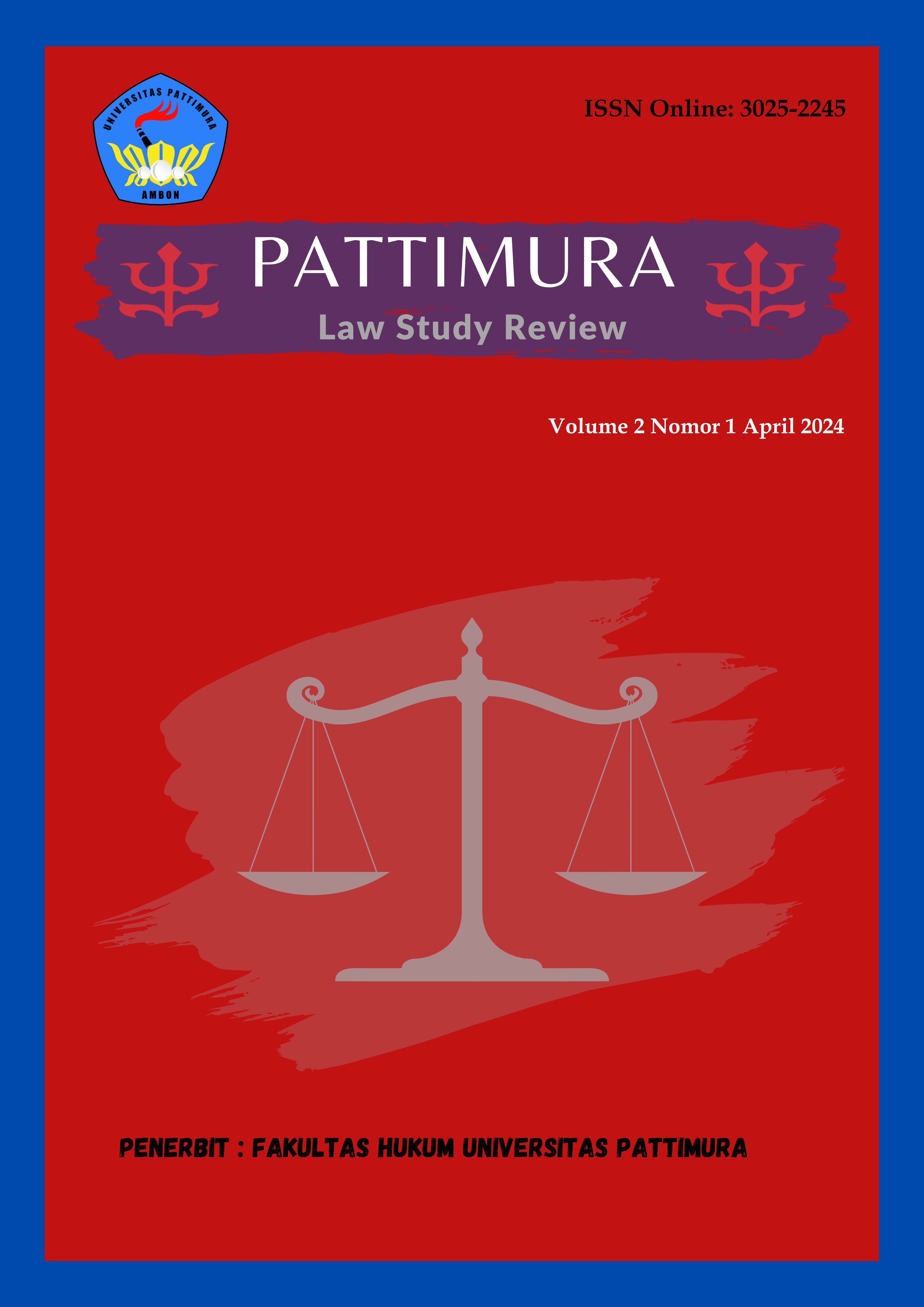Penegakan Hukum Pidana Terhadap Perbuatan Cabul Bagi Mayat (Studi Putusan Nomor 62/PID.B/2020/PN.BNR)
Abstract
ABSTRACT: Obscene acts for corpses are very heinous and indecent. This action relates to the norms of decency, the honor of a person. The research method used is normative juridical using a statutory approach, a conceptual approach and a case approach. The legal materials used are primary, secondary, and tertiary legal materials. The analysis of the legal material used is qualitative analysis. The results showed that: in criminal law enforcement against lewd acts for corpses, the rule of law against the accused KIRAH ALIAS BOLOT PRIMARI. The defendant has been legally and conclusively proven guilty of murder and corpse molestation, therefore the author uses concursus in research as a thought and policy in following up the study of the verdict in this writing. In accordance with the facts of the trial that took place, according to the author, the sentence for the accused KIRAH must be toughened again in order to have a deterrent effect on the perpetrators.
Downloads
References
Budi Prasetyo, Pengaturan Tindak Pidana Hukum Pencabulan Sejenis Berdasarkan Hukum Pidana Indonesia, neliti.com. Vol. II No. 2, 2017.
Charles Sorongan, Sanksi Pidana Terhadap Pelaku Tindak Pidana Pencabulan Terhadap Anak Menurut Kuhp, Lex Crimen Vol. VIII. No. 10/Okt/2019.
M. Farakhan. M. A. Aspek Hukum Pidana Terhadap Pelaku Persetubuhan Terhadap Mayat di Indonesia, Jurist-Diction, Vol. 5 No. 3, 2022.
Patrick Corputty, Deassy Jacomina Anthoneta Hehanussa, JE Latupeirissa, Victim Precipitation Sebagai Pertimbangan Dalam Penjatuhan Pidana (Kajian Perspektif Sistem Peradilan Pidana, Jurnal Belo, Vol. 7, No. 1, Agustus-2021.
Pricilia Uty Vianty Loppies, Elsa Rina Maya Toule, Carolina Tuhumury, Penerapan Pasal 59 Undang-Undang Nomor 35 Tahun 2014 Terhadap Anak sebagai Korban Perlakuan Salah dan Penelantaran, TATOHI: Jurnal Ilmu Hukum, Vol. 1, No. 2, April-2021.
Buku
Andy Hamzah, Hukum Acara Pidana Indonesia, Sinar Grafika, Jakarta, 2013.
Barda Nawawi Arief, Bunga Rampai Kebijakan Hukum Pidana Perkembangan Konsep KUHP Baru, Cetakan Ke-1, Kencana Prenadamediss Grub, Jakarta, 2008.
Deassy Jacomina Anthoneta Hehanussa dkk, Tindak Pidana Dalam KUHP, CV Widina Media Utama, Bandung, 2022.
Ismantoro Dwi Yuwono, Penerapan Hukum Dalam Kasus Kekerasan Seksual Terhadap Anak, Pustaka Yustisia, Yogyakarta, 2015.
Maramis Frans, Hukum Pidana umum dan Tertulis di Indonesia, Rajawali Pers Cetak II, Jakarta, 2013.
Mukti Aro, Praktek Perkara Perdata pada Pengadilan Agama, Cetak V, Pustaka Pelajar, Yogyakarta.
Muladi dan Barda Nawawi Arief, Teori dan Bunga Rumpai Hukum Pidana, Alumni, Bandung, 1992.
Nursariani Simatupang dan Faisal, Kriminologi, Pustaka Prima, Medan, 2017.
P.A.F. Lamintang, Kejahatan Melanggar Norma Kesusilaan dan Norma Kepatutan, Sinar Grafika, Jakarta, 2009.
Peter Mahmud Marzuki, Penelitian Hukum, Kencana Prenada Media Group, Jakarta 2009.
Poespoprodjo, Filsafat Moral Kesusilaan Dalam Teori dan Praktek, Bandung, Penerbit Remadja Karya CV, 1986.
Soerjono Soekanto Dan Sri Manuadji, Penilitian Hukum Normatif, Cetakan Kedua, PT.Raja Grafindo Persada, Jakarta, 2006.
Theodorus Yosep Parera, Advokat dan Penegakan Hukum, Cetakan Pertama, Genta Press, Yogyakarta, 2016. Barda Nawawi Arieif, 2007,Tindak Pidana Mayantara (Peirkeimbangan Kajian Cybeir Crimei di Indoneisia), (Jakarta: Raja Grafindo)
Lain-Lain
http://artikelddk.com/jenis-hukuman-pidana-menurut-pasal-10-kuhp/,diakses Rabu, 26 Juni 2019, pukul 10.55 wib
https://www.hukumonline.com/berita/baca/lt5af8 020b14c05/kejahatan-terhadap-mayat--bisakahdipidana, Diakses pada tanggal 17 Januari 2019.
Sri Sumiati, “Kebijakan Perlindungan Hukum Pidana Terhadap Korban Tindak Pidana di Bidang Medis”, Tesis Universitas Negeri emarang, 2009, hal 252-264. https://123dok.com/document/q2erenpq-kebijakan-perlindungan-pisana-korban-diponegorouniversity-institutional-resporitory.html
Copyright (c) 2024 Santy Marasabessy, Deassy Jacomina Anthoneta Hehanussa, Carolina Jacomina Anthoneta Tuhumury (Author)

This work is licensed under a Creative Commons Attribution-NonCommercial 4.0 International License.
Authors who publish their manuscripts in this Journal agree to the following conditions:
- The copyright in each article belongs to the author, as well as the right to patent.
- Authors are able to enter into separate, additional contractual arrangements for the non-exclusive distribution of the journal's published version of the work (e.g., post it to an institutional repository or publish it in a book), with an acknowledgment of its initial publication in this journal.
- Authors are permitted and encouraged to post their work online (e.g., in institutional repositories or on their website) prior to and during the submission process, as it can lead to productive exchanges, as well as earlier and greater citation of published work.
- Authors have the right to self-archiving of the article (Author Self-Archiving Policy)













